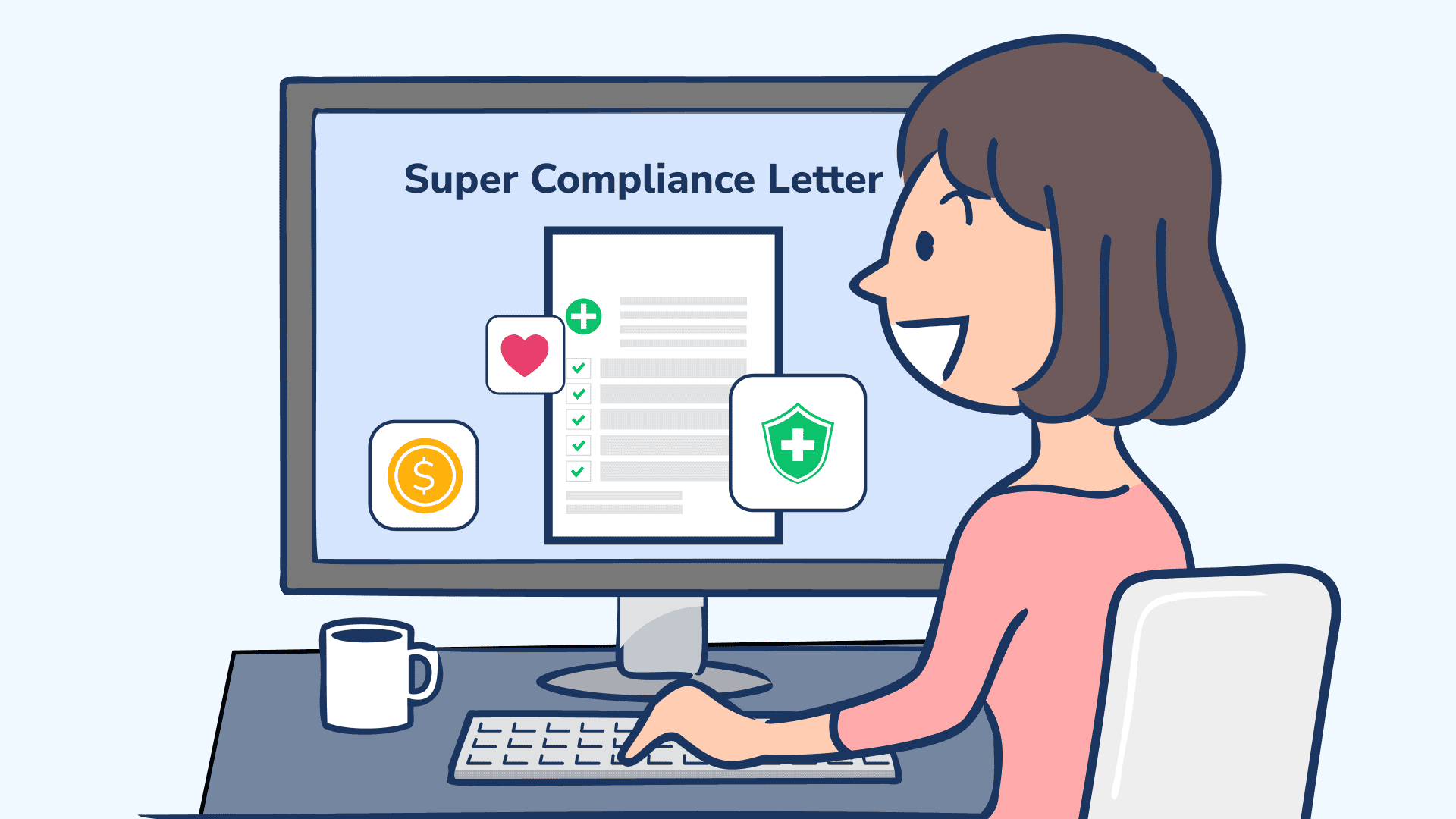Time to read : 3 Minutes
When I was offered my position at Compare Club, I was bursting with excitement. I was counting down the days to sink my teeth into the gig. I couldn’t shake that feeling of new year, new job. But if I’m being totally honest, there was one tiny thing I was dreading… the paperwork side of starting a new job.
To be fair, the digital onboarding process was pretty smooth going. There was no need to print, scan and email documents back. I simply logged into a portal and away I went.
I was flying through it. Then I reached the section on choosing my super and I was given three options. I could:
nominate an existing super fund
select an SMSF
go with my employer’s default fund.
I chose my existing fund. A few years back, I consolidated a handful of funds into one. It was a wise decision to roll them – I was saving lots on fees, plus it was a better investment for me.
So… getting back to filling out my fund details, I came across a curly one. I was asked to provide a ‘letter of compliance’ from my super company. … A what? I’d never been asked to supply this before. What hoops would I need to jump through to source it? How long would this step take?
With my position in personal finance, I assigned myself my first task – to understand more about this letter of compliance.
What’s a letter of compliance?
Also known as a ‘General Compliance Certificate’, I learnt this document verifies that your super fund complies with industry regulations and standards. It provides your employer with important information about the fund, including:
Fund name
Australian Business Number (ABN)
Unique Superannuation Identifier (USI)
Fund contact details (phone number / website).
It’s a general document so it doesn’t have any specific details on your super policy. These would still need to be provided to your employer to make the super contributions.
And here’s the thing: all funds that comply with Superannuation Industry (Supervision) Act 1993 (SIS Act) would have this compliance, so there shouldn’t be a need to worry about whether your fund complies or if they can provide the document.
How to get a letter of compliance from super?
Although I had thought this step – sourcing the compliance letter – may throw a spanner in the works, it was relatively easy to do. The document was available to download from my super fund’s website.
What I found interesting about this process is that the letter of compliance is not compulsory. Your employer may or may not request one. It’s really up to them. Which probably explains why this was something I’d never encountered before.
The compliance letter can also be used by your employer to check the details you’ve manually entered are correct – particularly numbers. That can boil down to having no delays in getting everything set up for you.
What about nominating an SMSF?
If you want your super contributions to be paid into an SMSF, it’s the ATO that provides the letter of compliance. In this case it’s known as a ‘notice of compliance’.
Should you ever consider setting up an SMSF in the future, the notice of compliance status follows shortly after the SMSF is registered.
If at any time you want to check your SMSF status, you can jump on Super Fund Lookup. Simply enter the SMSFs ABN, ACN or name. The status “Complying’ means the fund’s compliant and a notice has been issued. It also means you qualify for a concessional tax rate of 15%.
Be aware: Unlike the letter of compliance that can be downloaded at any time from your super’s website, the notice of compliance for an SMSF is only issued once – not annually. Keep your SMSF compliance record somewhere safe!
What if I choose my employer’s default fund?
If you’re happy to join your employer’s default fund, you won’t be asked to provide a letter of compliance. Think of it as a done deal.
Bottom line
Compliance letters are not compulsory for employers to request but they can get you thinking about your super.
If you are asked to provide one, it will require jumping on your fund’s website or giving them a call to point you in the right direction.
This process may bring your super top of mind. Perhaps it’s an opportunity to look at your fund, check out the fees and see how it’s performing.
Go deeper:
5 questions to help your teen select their first super fund
Disclaimer
The information contained on this web page is of general nature only and has been prepared without taking into consideration your objectives, needs and financial situation. You should check with a financial professional before making any decisions.


































